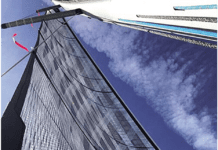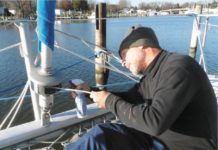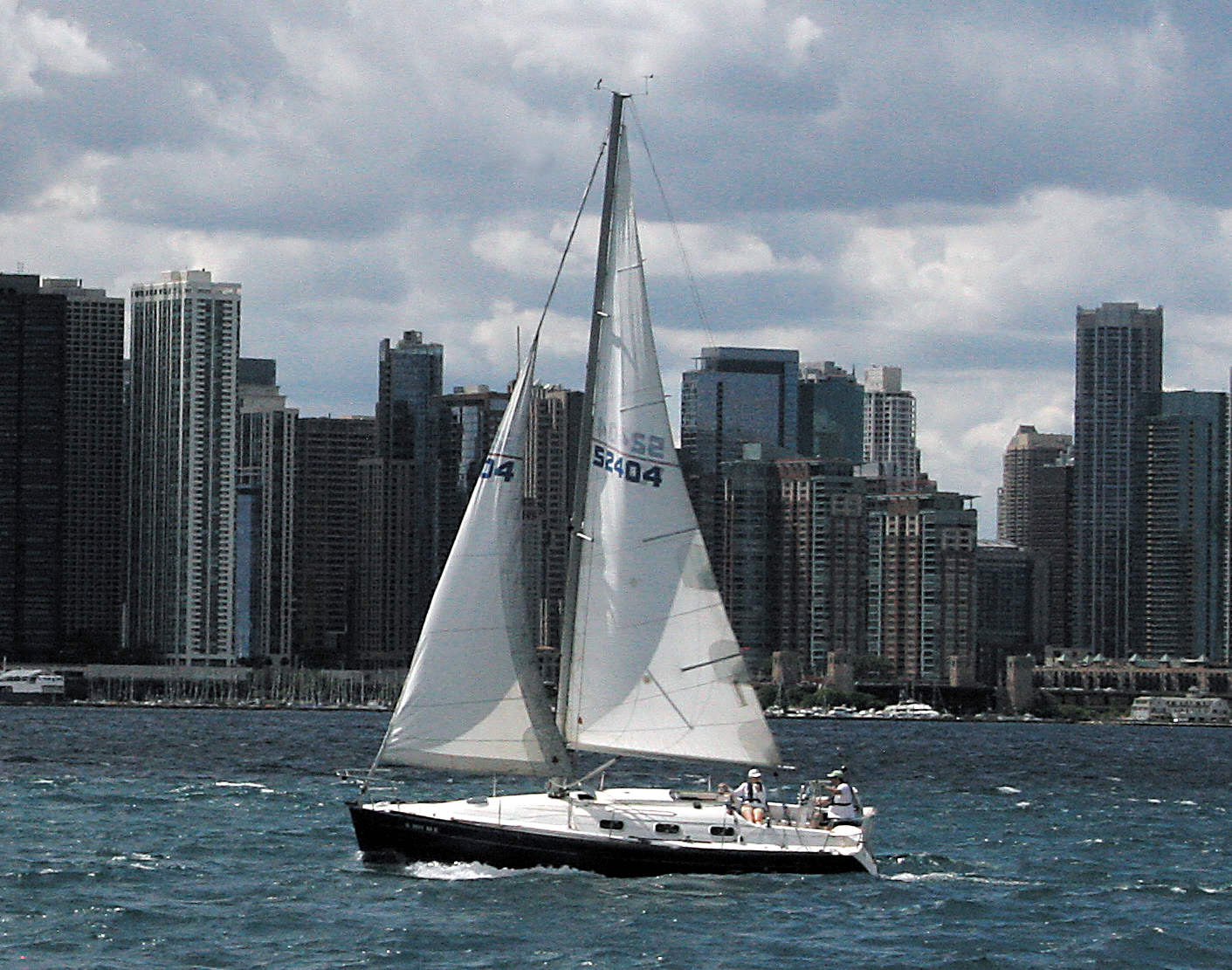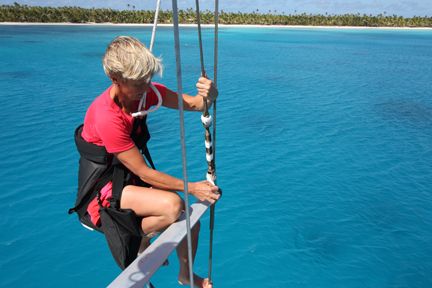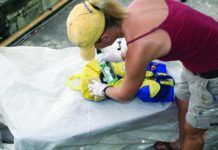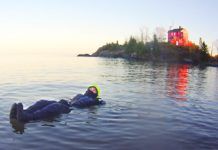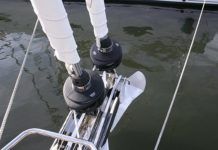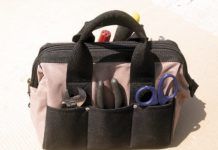Preventing Mildew in Marine Fabrics
Canvas dodgers and biminis are the hallmark of a cruising yacht, keeping the sun at bay and allowing the crew to "dodge" the worst of the weather. Canvas also protects sails, windows, and machinery. The cost of these fabric covers adds up quickly, so we wanted to find the best way to protect the investment and extend the lifespan of the fabric.
Glen Raven, the manufacturer of Sunbrella, recommends that routine maintenance include frequent freshwater rinsing plus spot cleaning the fabric. After a more thorough cleaning, Sunbrella advises owners to apply a treatment (specifically Gold Eagle 303 High Tech Fabric Guard) to restore the fabric's repellency. In our February 2014 report on canvas maintenance, we took a look at 303 High Tech Fabric Guard and other treatments designed to keep on-board canvas water repellent and looking its best.
Glen Raven, the manufacturer of Sunbrella, recommends that routine maintenance include frequent freshwater rinsing plus spot cleaning the fabric. After a more thorough cleaning, Sunbrella advises owners to apply a treatment (specifically Gold Eagle 303 High Tech Fabric Guard) to restore the fabric's repellency. In our February 2014 report on canvas maintenance, we took a look at 303 High Tech Fabric Guard and other treatments designed to keep on-board canvas water repellent and looking its best.
Gearing Up for Winter Sailing
While many North American sailors have already hauled out their boats for winter, there are plenty of cold-weather diehards who refuse to bow to the season. In a recent issue of Practical Sailor, contributor Drew Frye shares his tips for sailing year round above the frost-line. It has always seemed a shame to me that the great majority of boats in the country are only used in the summer," says Frye, who sails through the winter on Chesapeake Bay. "[In winter] I have the waters virtually to myself.
Steer Clear of the Marine Cleaner Con
Lest you think multi-billion-dollar chemical companies and their geeks in white lab coats have a lock on cleaning your boat, there are numerous homebrew solutions that have the ability to bring back that new boat shine.
The Boat Show Survival Guide
A few years back at the Port Townsend Wooden Boat Show, I was reminded of the hidden dangers of boat shows. I was sitting in the cockpit of a custom Ed Monk design offered for sale and had forgotten that I had a mortgage and a job that required regular appearances at an office.I caressed the freshly varnished tiller. It seemed to fit my hand perfectly.The previous owner sailed it all over the Pacific, the owner said. I suddenly realized Id violated the first rule for attending a boat show: Never go alone.
The Pesky Problems of Boat Pests
Ever since I fell under the spell of E.B. White’s classic tale “Charlotte’s Web,” I’ve been more than reluctant to stomp on every bug we see on deck—especially spiders. I know my arachnid empathy might come back to bite me, literally. Nevertheless, when someone on board shouts, "Spider!" I still reach for a clear plastic container (to trap the uninvited guest) and sheet of notebook paper (to slip under the plastic dome, for extraction).
Each time I do, I imagine prominent American philosopher and famous bug lover E.O. Wilson nodding with approval.
Treatments to Preserve Ropes and Lines through the Seasons
If you want your ropes to stay a bit lighter in the rain and spray, waterproofing treatments can definitely help. In our testing, Nikwax Rope Proof made a 39-percent difference in water-weight gain after a dunking—compared to untreated line—after eight months of use. It also gave a subtle, but unmistakable, improvement in handling and reduction in snarling. It seems like good stuff to use on all sheets and halyards.
Hot Water Heater Installation Tips
To keep pipe joints from leaking, use Teflon tape or pipe joint compound, and remember that hose barb-to-hose connections are much easier to make drip-proof with a hose clamp than the same connection made on a threaded pipe stub.
The DIY Solent Stay or Inner Forestay
One of the most common question we are asked regarding standing rigging upgrades is, How do I install an inner forestay or Solent stay? Because these stays might one day be depended upon to carry a storm jib in heavy weather, and because every boat presents different challenges for this project, it's important to do your research and investigate other boats that have carried out this retrofit. Once you have a general idea of what features you like, consult a rigger for the initial design. Here are several resources that can start you down the right path.
Tool Buying Guide for the Cruising Sailor
When it takes longer to find the right tool for the job than to actually complete the job, consider creating your own doctors bag of boat tools. In this weeks Inside Practical Sailor blog, youll find great advice on taming your toolbox from veteran circumnavigator Evans Starzinger, as well as links to some of our most popular tests of hand tools and power tools-just in time for Father's Day.
Six Things Worth Giving Thanks For
This coming Thanksgiving prompted my reflection on all that sailors like me have to be thankful for. It's easy to appreciate our good fortune on a tradewind passage—with the log ticking off the miles, and cloud streets stretching above us. But, looking back through the lens of time, it's clear even the roughest passages have their gifts.
Here then, as Practical Sailor embarks on its 50th year of publication, are a few things I'm thankful for.













